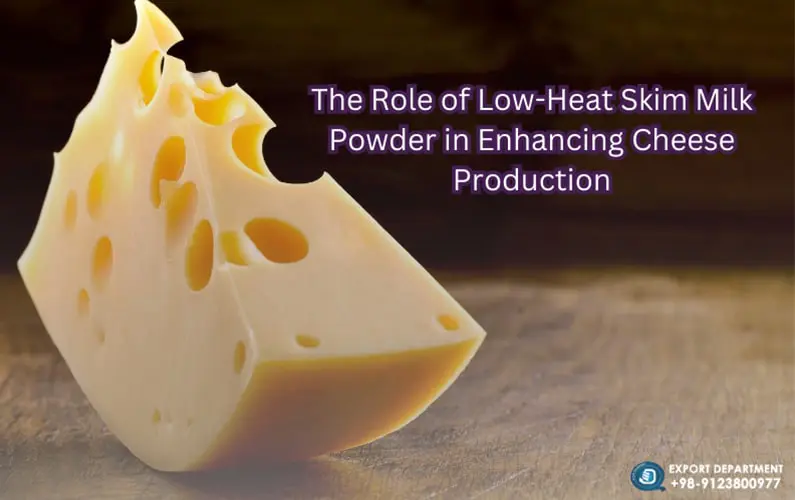Non-Dairy Creamer Powder: A Versatile Ingredient for Food and Beverage Industries
Non-dairy creamer powder offers a creamy texture and enhances the taste and stability of various food and beverage products. Its versatility and lactose-free nature make it a popular choice across coffee, bakery, ice cream, and more.
The simple act of adding creamer to coffee or tea can elevate an ordinary beverage into a rich, creamy experience. This versatile addition has become a staple across the globe, offering a smooth texture and a hint of sweetness—often without relying on traditional dairy. This blog focuses on powdered non-dairy creamers, which serve as indispensable ingredients in the food and beverage industries.
Understanding Non-Dairy Creamers: A General Overview
Non-dairy creamers, also commonly known as coffee whiteners or coffee creamers, are designed as alternatives to milk and cream in various beverages and food applications. Their primary purpose is to replicate the creamy texture and rich mouthfeel of dairy products.
A Brief History and Evolution: The journey of non-dairy creamers began in the 1940s, with pioneers like Holton "Rex" Diamond experimenting with soy protein to create stable coffee additives. The first commercial success arrived in 1950 with Melvin Morse and Dick Borne’s "Mocha Mix," initiating a trend that would lead to the vast array of options available today. Early formulations were often made from dehydrated milk and sugar, but as consumer preferences shifted and food science advanced, modern non-dairy creamers evolved to feature a blend of vegetable oils, sweeteners, and flavorings. This transformation caters to a growing demand for alternatives that address diverse dietary restrictions and preferences, such as lactose intolerance or vegan lifestyles. The market demand for these products is substantial, with sales of cream and non-dairy creamer reaching $1.35 billion between September 2018 and September 2019, according to FDA data.
The Nuance of Terminology: "Non-Dairy" vs. "Dairy-Free"
One of the most significant sources of confusion for consumers and product developers alike lies in the terminology used. While "non-dairy" suggests an absence of dairy, it does not necessarily mean a product is entirely free from all dairy-derived ingredients. This is a crucial distinction, especially for individuals with dairy allergies or those following strict vegan diets.
Many products labeled "non-dairy" contain sodium caseinate, which is a milk protein derivative. Although derived from milk, sodium caseinate is considered "non-dairy" by the FDA because it is a protein and not a source of lactose. As per FDA regulations (21CFR101.4), if a creamer contains sodium caseinate and is labeled "non-dairy," it must include a parenthetical term like “a milk derivative” after sodium caseinate in the ingredient list. In contrast, "dairy-free" products are explicitly formulated without any dairy-derived ingredients, making them suitable for a broader audience, including vegans. This means that despite the common perception, many non-dairy creamers are not suitable for vegans due to the presence of sodium caseinate.
Non-Dairy Creamer Powder: A Versatile Ingredient
The non-dairy creamer powder stands out as a highly versatile ingredient, particularly valued in industrial food and beverage applications. It is specifically formulated as a lactose-free and shelf-stable substitute for milk or cream, made from high-quality plant-based fats. Its meticulously designed composition ensures a smooth, dairy-like mouthfeel, a rich and creamy texture, and an optimal whitening effect. One of its most impressive features is its ability to disperse uniformly and dissolve rapidly in beverages without causing oil separation on the surface, a testament to advanced emulsifiers and precise formulation.
What is Non-Dairy Creamer Powder Made Of?
According to the U.S. Department of Agriculture (USDA) definition, non-dairy creamer powder commonly contains a specific set of ingredients:
Corn Syrup Solids / Glucose Syrup / Maltodextrin
These serve as bulking agents, sweeteners, and texture improvers. They contribute to the body and consistency of the creamer.
Vegetable Fats or Oils
These are crucial for creating the creamy texture and whitening effect. Common sources include hydrogenated vegetable oils. The fat content in non-dairy creamer powder can vary significantly, ranging from low fat (5%-20%), medium fat (21%-50%), to high fat (51%-80%). This allows manufacturers to select a type based on the desired richness and application.
Sodium Caseinate
A milk-derived protein that provides a mild dairy flavor and acts as an emulsifying agent, contributing to the creamer's smooth mouthfeel. Its presence is why many "non-dairy" creamers are not considered vegan.
Dipotassium Phosphate / Buffering Salt
These ingredients help maintain the pH balance of the creamer, preventing curdling when mixed with acidic beverages like coffee.
Mono- and Diglycerides / Emulsifiers
These are essential for blending oil and water phases, stabilizing the emulsion, and ensuring the creamer disperses smoothly without separating.
Sodium Silicoaluminate / Anti-caking Agent
This ingredient is vital for maintaining the free-flowing powder texture and preventing clumping, ensuring ease of use and consistent quality.
Other Additives
Depending on the specific formulation, non-dairy creamer powder may also contain ingredients like sodium tripolyphosphate, sodium stearoyl lactylate, and tricalcium phosphate. If tricalcium phosphate is included, the product will contain calcium.

Properties of Non-Dairy Creamer Powder
Non-dairy creamer powder possesses several key properties that make it highly desirable for various food applications:
-
Appearance: It is typically a white to light cream color.
-
Solubility and Dispersion: It is designed to be readily dissolved in water at temperatures ranging from 79 to 82°C (175 to 180°F). Crucially, it dissolves without curdling, feathering, or forming undissolved floating particles, and prevents the formation of an oil layer on the surface of beverages. This quick and easy dispersion is a significant advantage in beverage mixes.
-
Emulsification Function: Its inherent emulsifying capabilities allow it to blend seamlessly with other ingredients, contributing to smooth textures.
-
Foaming Ability: Certain formulations can enhance foaming, which is particularly beneficial in beverages like cappuccino.
-
Shelf Life: Non-dairy creamer powder boasts a long shelf life, typically around 12 months, due to its powdered form, which contributes to its convenience and stability.
-
Lactose-Free Nature: While it may contain milk derivatives like sodium caseinate, it is generally considered lactose-free, making it suitable for individuals with lactose intolerance due to the manufacturing process of sodium caseinate.
Versatile Applications of Non-Dairy creamer powder in the Food and Beverage Industries
Due to its excellent properties, including good water solubility, emulsification function, and foaming ability, non-dairy creamer powder meets the processing needs for a vast array of food applications. Its ability to reduce manufacturing costs while maintaining similar quality compared to using milk makes it an attractive alternative for producers.
Here are some of its primary applications across various sectors:
-
Coffee and Coffee-Flavored Beverages: This is perhaps the most well-known application. Non-dairy creamer powder can improve the color and increase whiteness in coffee, providing a strong milk flavor and a soft taste. It contributes a smooth and uniform sensation to the texture and taste of coffee, preventing bitterness and making the overall experience more pleasant. It is also widely used in cappuccino production.
-
Milk Tea: In milk tea, non-dairy creamer powder helps to create smoothness and creamy bubbles. It can improve the bitter taste of tea and enhance the color, adding a silky, bright appearance. They aim to add a smooth, strong, and natural cream flavor without artificial additives and mask any possible off-flavors.
-
Ice Cream: Non-dairy creamer powder offers several benefits in ice cream production:
-
Increases the volume of ice cream.
-
Helps to keep ice cream stable and maintain its shape, preventing thawing and the formation of large ice crystals.
-
Whitens and makes ice cream creamier.
-
It can be incorporated as a premix powder for ice cream.
-
-
Bakery and Confectionery Products: Acting similarly to an emulsifier, non-dairy creamer powder can significantly improve the structure and physical properties of baked products, enhancing their appearance. It provides better flavor in these products and can prolong their shelf life, helping to prevent staleness. It also improves the performance of dough. It is used in biscuits, cakes, infant formula, and various bakery products.
-
Powdered Beverage Mixes: Its quick dispersion and excellent solubility make it ideal for hot drink mixes such as cocoa, black tea, and hot chocolate.
-
Soups and Ready-to-Cook Meals: It can be incorporated into soups and various ready-to-cook meals to improve texture and provide a creamy consistency.
- Used in the preparation of whipped topping powder.
Advantages and Key Considerations
The widespread adoption of non-dairy creamer powder in the food and beverage industries is driven by several compelling advantages:
Cost-Effectiveness: It can significantly reduce manufacturers' production costs while maintaining similar quality compared to using traditional milk or cream.
Lactose-Free Nature: It offers a suitable alternative for consumers with lactose intolerance, expanding the market reach of products.
Excellent Solubility and Dispersion: Its ability to dissolve rapidly and uniformly without curdling or oil separation is crucial for product quality and consumer satisfaction, especially in beverages.
Enhanced Taste and Texture: It provides a strong "milk" taste and desirable mouthfeel, replicating the creamy sensation of dairy products without actual milk.
Shelf Stability: As a powdered product, it boasts a long shelf life and is easy to store and transport, contributing to operational efficiency.
Versatility: Its wide range of applications across beverages, baked goods, ice cream, and other food products makes it an invaluable ingredient for product innovation and diversification.
Performance: It effectively replaces milk or cream, offering a consistent whitening effect and improving the physical properties of doughs and other food matrices.
Lactose Levels: Although primarily lactose-free, some formulations, particularly powdered coffee creamers and whipped toppings, may contain low levels of lactose stemming from the sodium caseinate manufacturing process.
Calcium Content: It does not inherently contain calcium unless tricalcium phosphate is specifically added as an ingredient.
Halal Status: Non-dairy creamer powder is generally considered Halal.
ChaltaFarm Non-Dairy Creamer Powder for Export
ChaltaFarm Dairy Export Department offers a popular Non-Dairy Creamer Powder, specifically designed as a raw material for food processing applications, including coffee and baking. This product is crafted to deliver a creamy texture and rich flavor. ChaltaFarm's Non-Dairy Creamer Powder is formulated with Milk-Derived Protein, Vegetable Fats, Glucose Syrup, and Food Additives, aligning with the functional needs of various industrial applications. It is available in a convenient 25 Kg multi-layer paper bag, making it suitable for bulk handling and export. With a high fat content, typically ranging from 30-37%, this creamer powder ensures rich creaminess in final products. It boasts a 12-month shelf life, making it an excellent choice for international distribution. As a dedicated export department, ChaltaFarm supplies this essential ingredient to many countries globally.
Conclusion
In conclusion, non-dairy creamer powder is far more than just a simple coffee additive. It is a multi-functional ingredient that has carved out an indispensable niche in the food and beverage industries. Its meticulous formulation, diverse properties, and broad range of applications—from enhancing the creaminess of coffee and milk tea to improving the structure of baked goods and stabilizing ice cream—underscore its remarkable versatility. As consumer demands for diverse dietary options continue to grow, the role of non-dairy creamer powder will undoubtedly expand, making it a key player in shaping the future of food innovation.



.webp)

.webp)